How Noise Cancelling Headphones Work: The Quest for Quiet
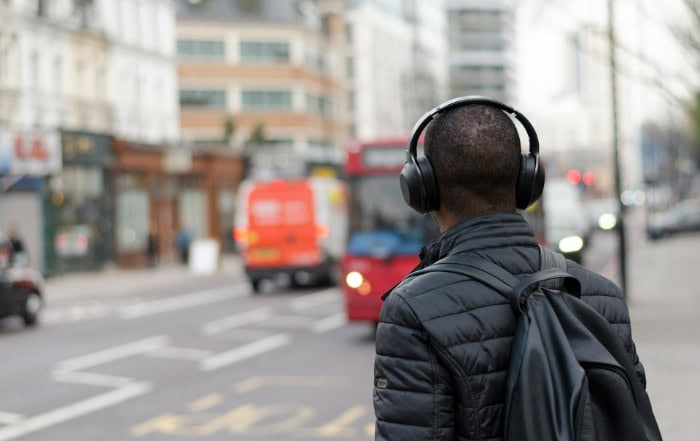
Silence is golden, but in today’s noisy world, it can be a rare commodity. Enter noise cancelling headphones – the ultimate solution for anyone seeking a peaceful oasis amidst the chaos.
These sophisticated devices have taken the audio world by storm, offering an unparalleled listening experience that goes beyond mere sound quality. By actively eliminating unwanted background noise, noise cancelling headphones create a cocoon of tranquility, allowing you to immerse yourself in your favorite music, podcasts, or audiobooks without interruption.
But what’s the magic behind these high-tech wonders?
Understanding Noise Cancellation Technology
Noise cancellation technology has become increasingly popular in recent years, offering a way to reduce unwanted ambient noise and create a more immersive audio experience. To appreciate the benefits of noise cancelling headphones, it’s essential to understand the different types of noise cancellation and how they work.
Active vs. Passive Noise Cancellation
There are two main types of noise cancellation: active and passive. Passive noise cancellation relies on the physical design of the headphones to block out external noise.
This is achieved through the use of thick ear cushions, tight-fitting earcups, and high-density materials that absorb sound waves. While passive noise cancellation can be effective, it has limitations and is best suited for reducing high-frequency noise.
On the other hand, active noise cancellation (ANC) uses advanced electronic circuitry to counteract unwanted noise. ANC headphones actively analyze the ambient sound waves and generate an inverse sound wave that effectively cancels out the noise.
This technology is more effective at reducing low-frequency sounds, such as the hum of an airplane engine or the rumble of a train.
Components of Noise Cancelling Headphones
To achieve active noise cancellation, headphones rely on several key components. These include:
- Microphones: ANC headphones feature built-in microphones that continuously monitor the ambient noise. These microphones are typically located on the outside of the earcups to capture external sounds accurately.
- Noise cancellation circuitry: The heart of ANC technology lies in the electronic circuitry that processes the sound captured by the microphones. This circuitry analyzes the incoming noise and generates an inverse sound wave that effectively cancels out the unwanted noise.
- Speakers: The speakers in ANC headphones not only deliver the desired audio content but also play the inverse sound waves generated by the noise cancellation circuitry. The combination of the original audio and the inverse sound waves results in a significantly reduced perception of external noise.
- Battery: Active noise cancellation requires power to function, which is provided by a built-in battery. The battery life of ANC headphones varies depending on the model and usage, but most offer several hours of continuous playback with noise cancellation enabled.
The Science Behind Active Noise Cancellation
Active noise cancellation works on the principle of destructive interference. When two sound waves with opposite phases collide, they cancel each other out, resulting in a reduction of the overall sound level.
ANC headphones use this principle to neutralize unwanted noise.
Here’s how it works:
- The microphones in the headphones continuously monitor the ambient noise, capturing its waveform and frequency.
- The noise cancellation circuitry analyzes the captured sound and generates an inverse sound wave with the same amplitude but opposite phase.
- The inverse sound wave is played through the headphones’ speakers, colliding with the original ambient noise.
- The collision of the two sound waves results in destructive interference, effectively canceling out the unwanted noise.
This process happens in real-time, continuously adapting to changes in the ambient noise to provide optimal noise cancellation.
Types of Noise Cancellation
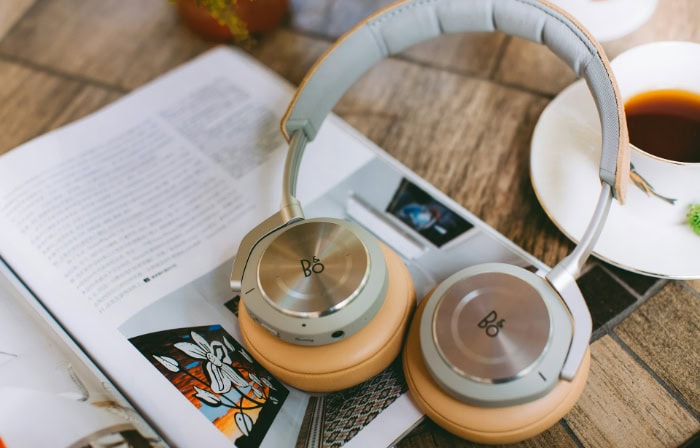
While all active noise cancelling headphones aim to reduce unwanted ambient noise, there are different approaches to achieving this goal. Each type of noise cancellation has its own strengths and weaknesses, making it essential to understand the distinctions between them.
Feedforward ANC
Feedforward active noise cancellation is the most common type found in consumer headphones. In this approach, the microphones are placed on the outside of the earcups, allowing them to capture external noise before it reaches the listener’s ears.
The noise cancellation circuitry then analyzes the incoming sound and generates an inverse sound wave, which is played through the headphones’ speakers to cancel out the noise.
Feedforward ANC is particularly effective at reducing low-frequency noise, such as the hum of an airplane engine or the rumble of a subway train. However, it may struggle with sudden or high-frequency sounds, as there is a slight delay between the noise being detected and the inverse sound wave being generated.
Feedback ANC
Feedback active noise cancellation, also known as closed-loop ANC, uses microphones placed inside the earcups to monitor the sound that reaches the listener’s ears. This allows the noise cancellation circuitry to adjust the inverse sound wave in real-time based on the actual noise level inside the earcups.
Feedback ANC is better at handling a wider range of frequencies and can adapt more quickly to changing noise conditions compared to feedforward ANC. However, it may not be as effective at reducing low-frequency noise and can sometimes produce a slight hissing sound due to the continuous adjustments made by the circuitry.
Hybrid ANC
Hybrid active noise cancellation combines the best of both feedforward and feedback ANC. In this approach, microphones are placed both outside and inside the earcups, allowing the headphones to capture and analyze noise from both directions.
The noise cancellation circuitry then generates inverse sound waves based on the combined input from both sets of microphones.
Hybrid ANC offers the most comprehensive noise reduction, as it can effectively tackle both low and high-frequency noise. By leveraging the strengths of both feedforward and feedback ANC, hybrid systems provide a more balanced and adaptable noise cancellation experience.
Adaptive Noise Cancellation
Adaptive noise cancellation is a more advanced form of ANC that dynamically adjusts the level of noise cancellation based on the ambient noise conditions. This technology uses algorithms to analyze the incoming noise and optimize the inverse sound wave in real-time.
Headphones with adaptive noise cancellation often feature multiple noise cancellation modes, such as “office,” “travel,” or “outdoor,” which are optimized for different environments. Some models even allow users to customize the level of noise cancellation based on their personal preferences.
Adaptive noise cancellation ensures that the headphones provide the most effective noise reduction in any given situation, making it ideal for users who frequently move between different noise environments.
Benefits and Applications
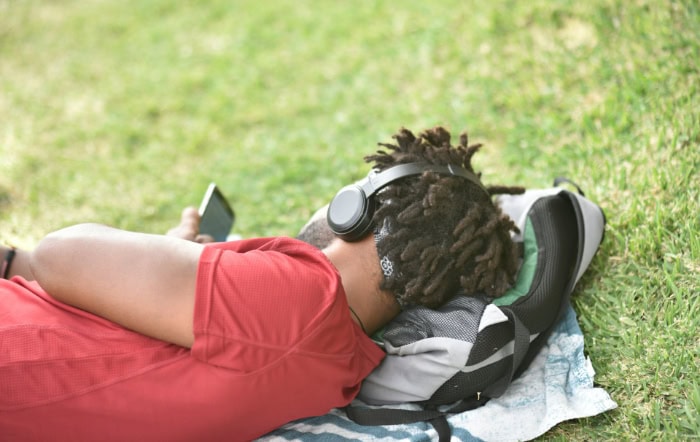
Noise cancelling headphones offer a range of benefits that extend beyond the realm of audio enjoyment. From improving focus and productivity to protecting hearing health, these versatile devices have found applications in various aspects of daily life.
Improved Audio Quality and Listening Experience
One of the most significant benefits of noise cancelling headphones is the enhanced audio quality they provide. By actively reducing background noise, these headphones allow users to hear their music, podcasts, or audiobooks with exceptional clarity and detail.
The elimination of external distractions enables listeners to fully immerse themselves in the audio content, appreciating subtle nuances and intricate soundscapes that might otherwise be lost in noisy environments.
Moreover, noise cancelling headphones can create a more enjoyable listening experience by reducing listener fatigue. In noisy settings, people often tend to increase the volume of their audio to compensate for the background noise, which can lead to ear strain and discomfort over time.
With noise cancellation technology, users can listen at lower, safer volumes without sacrificing audio quality, promoting a more comfortable and enjoyable experience.
Enhanced Focus and Productivity
In our modern, distraction-filled world, maintaining focus and productivity can be a challenge. Noise cancelling headphones offer a solution by creating a peaceful oasis amidst the chaos.
By blocking out unwanted noise, these headphones help users concentrate on their tasks, whether it’s studying, working, or engaging in creative pursuits.
The reduction of external distractions allows the brain to focus more effectively, improving cognitive performance and mental clarity. This is particularly beneficial for individuals who work in open-plan offices, coffee shops, or other noisy environments where constant background chatter and sounds can hinder productivity.
With noise cancelling headphones, users can create a personal bubble of tranquility, enabling them to tackle their work with greater efficiency and accuracy.
Hearing Protection in Loud Environments
Prolonged exposure to loud noise can lead to hearing damage, tinnitus, and even permanent hearing loss. Noise cancelling headphones offer a practical solution for individuals who frequently find themselves in noisy environments, such as construction sites, factories, or live music venues.
By actively canceling out the harmful ambient noise, these headphones help protect the delicate structures of the inner ear from the cumulative effects of loud sounds. This is especially important for professionals who work in high-noise industries, as well as musicians and concert-goers who are regularly exposed to high decibel levels.
In addition to providing hearing protection, noise cancelling headphones can also contribute to overall well-being by reducing stress and anxiety levels associated with constant noise exposure. The ability to create a peaceful personal space can promote relaxation and mental well-being, even in the most chaotic surroundings.
Travel and Commuting Comfort
Noise cancelling headphones have become a must-have accessory for frequent travelers and commuters. The drone of airplane engines, the rumble of trains, and the general hustle and bustle of public transportation can make travel a stressful and tiring experience.
By effectively canceling out these low-frequency noises, noise cancelling headphones can significantly improve travel comfort.
With the ability to create a more peaceful and relaxing environment, these headphones allow travelers to unwind, rest, or enjoy their favorite audio content without the constant intrusion of background noise. This can lead to a more pleasant and less fatiguing journey, whether it’s a short commute or a long-haul flight.
Moreover, noise cancelling headphones can also serve as a polite way to signal to others that you are not available for conversation, providing a sense of privacy and personal space in crowded travel settings.
Limitations and Challenges
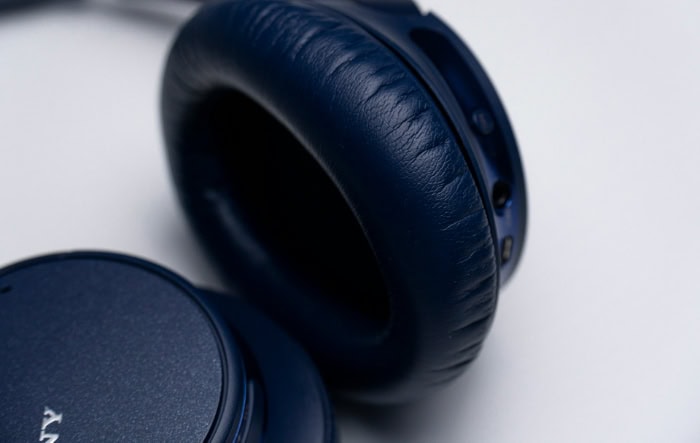
While noise cancelling headphones offer numerous benefits, it’s essential to understand their limitations and the challenges they face. From the types of noise they can effectively cancel to sound quality trade-offs, being aware of these factors can help users make informed decisions and set realistic expectations.
Types of Noise Effectively Cancelled
Active noise cancelling headphones are most effective at reducing low-frequency, constant sounds, such as the drone of an air conditioner, the buzz of a refrigerator, or the deep rumble of a busy city street.
They excel at canceling out these types of noises because the inverse sound waves generated by the headphones can easily match and neutralize the consistent, predictable patterns of low-frequency sounds.
However, noise cancelling headphones may struggle with sudden, high-frequency, or irregular noises, such as human speech, dog barks, or car horns.
The adaptive nature of active noise cancellation technology means there is a slight delay between the noise being detected and the inverse sound wave being generated, making it challenging to cancel out abrupt or unpredictable sounds effectively.
Battery Life Considerations
One of the primary challenges of active noise cancelling headphones is their reliance on battery power. The electronic circuitry responsible for analyzing ambient noise and generating inverse sound waves requires a constant power supply, which is typically provided by a built-in rechargeable battery.
The battery life of noise cancelling headphones varies depending on the model, with most offering between 20 to 40 hours of playback with active noise cancellation enabled.
While this may be sufficient for most users, it does require regular charging, which can be inconvenient for those who forget to charge their headphones or are on extended trips without access to power outlets.
Some noise cancelling headphones offer a passive mode, allowing users to continue listening to audio even when the battery is depleted. However, in this mode, the noise cancellation feature is disabled, and the headphones rely solely on their physical design to block out noise.
Sound Quality Trade-offs
While noise cancelling headphones can significantly enhance the listening experience by reducing background noise, they may also introduce some trade-offs in terms of sound quality. The active noise cancellation process can slightly alter the audio signal, potentially affecting the overall sound signature of the headphones.
Some users may notice a slight hiss or white noise when the active noise cancellation is enabled, particularly in quieter environments. This is due to the constant processing of ambient sound by the headphones’ circuitry.
While this noise is usually minimal and often masked by the audio content, it can be noticeable during quiet passages or when no audio is playing.
Additionally, the emphasis on noise cancellation technology may result in a compromise in other aspects of sound quality, such as soundstage, imaging, or frequency response. Manufacturers must strike a balance between effective noise cancellation and maintaining a high-quality audio experience.
Choosing the Right Noise Cancelling Headphones
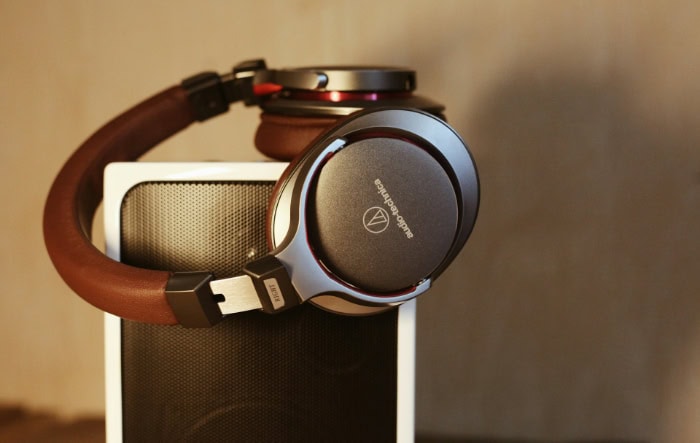
With a wide variety of noise cancelling headphones available on the market, selecting the perfect pair can be a challenging task. To make an informed decision, it’s essential to consider various factors such as key features, form factor, connectivity, and price-performance ratio.
Important Features to Consider
When shopping for noise cancelling headphones, there are several important features to keep in mind. Firstly, evaluate the level of noise cancellation offered by the headphones.
Look for models that utilize advanced active noise cancellation technology, such as hybrid or adaptive ANC, to ensure optimal noise reduction across a wide range of frequencies.
Sound quality is another crucial aspect to consider. While noise cancellation is important, it should not come at the expense of audio fidelity.
Opt for headphones that deliver clear, balanced, and detailed sound reproduction, with a wide frequency response and low distortion.
Comfort is also a key factor, especially if you plan on wearing the headphones for extended periods. Look for headphones with well-cushioned ear cups, adjustable headbands, and breathable materials to ensure a comfortable fit.
Additionally, consider the battery life of the headphones, particularly if you intend to use them for long commutes or travel. Aim for models that offer at least 20 hours of playback with active noise cancellation enabled.
Over-Ear vs. In-Ear Options
Noise cancelling headphones come in two main form factors: over-ear and in-ear. Over-ear headphones, also known as circumaural headphones, have large ear cups that completely surround the ears.
They offer excellent noise isolation and are generally more comfortable for extended use. Over-ear headphones also tend to have larger drivers, resulting in better sound quality and more powerful bass response.
In-ear headphones, or earbuds, are more compact and portable than their over-ear counterparts. They fit directly into the ear canal, providing a secure and snug fit.
In-ear headphones are ideal for users who prioritize portability and prefer a more discreet listening experience. However, they may not offer the same level of noise cancellation and sound quality as over-ear models due to their smaller size.
Ultimately, the choice between over-ear and in-ear noise cancelling headphones comes down to personal preference, comfort, and intended use.
Wired vs. Wireless Considerations
Another important decision to make when choosing noise cancelling headphones is whether to opt for wired or wireless connectivity. Wired headphones connect directly to the audio source via a cable, providing a reliable and stable connection.
They do not require charging and often offer better sound quality due to the absence of audio compression.
On the other hand, wireless noise cancelling headphones use Bluetooth technology to connect to the audio source. They offer greater freedom of movement and eliminate the hassle of tangled cables.
Wireless headphones are particularly convenient for users who engage in physical activities or prefer a clutter-free listening experience.
However, wireless headphones rely on battery power and require regular charging. They may also be subject to occasional audio dropouts or latency issues, depending on the quality of the Bluetooth connection.
Consider your lifestyle, intended use, and personal preferences when deciding between wired and wireless noise cancelling headphones.
Balancing Price and Performance
Noise cancelling headphones are available at various price points, ranging from budget-friendly options to high-end, premium models. While it’s tempting to opt for the most affordable option, it’s important to strike a balance between price and performance.
Higher-priced noise cancelling headphones often offer superior noise cancellation capabilities, better sound quality, and more advanced features such as touch controls, companion apps, and multi-device pairing. They may also have a more durable build quality and come with additional accessories like carrying cases and airline adapters.
However, this does not mean that budget-friendly options should be disregarded entirely. Many affordable noise cancelling headphones still provide effective noise reduction and decent sound quality, making them suitable for users with limited budgets or those who prioritize value for money.
When choosing noise cancelling headphones, establish your budget and prioritize the features that matter most to you. Read reviews from trusted sources and compare different models within your price range to find the best balance between price and performance.
Conclusion
Noise cancelling headphones have emerged as a game-changer in the world of audio technology, offering users the ability to immerse themselves in a peaceful oasis of sound, free from the distractions of the outside world.
By harnessing the power of active noise cancellation, these headphones generate inverse sound waves that effectively neutralize unwanted ambient noise, allowing listeners to enjoy their audio content with exceptional clarity and detail.
From the different types of noise cancellation technology, such as feedforward, feedback, and hybrid ANC, to the wide range of benefits and applications, including improved focus, hearing protection, and travel comfort, noise cancelling headphones have proven to be a versatile tool for navigating our noisy modern lives.
However, it’s essential to recognize their limitations, such as the types of noise they can effectively cancel, battery life considerations, and potential sound quality trade-offs.
When selecting the perfect pair of noise cancelling headphones, factors like key features, form factor, connectivity, and price-performance ratio should be carefully considered to ensure the best possible listening experience.
As technology continues to advance, the future of noise cancellation looks brighter than ever, with the potential for even more sophisticated algorithms, improved battery life, and seamless integration with other audio technologies.


